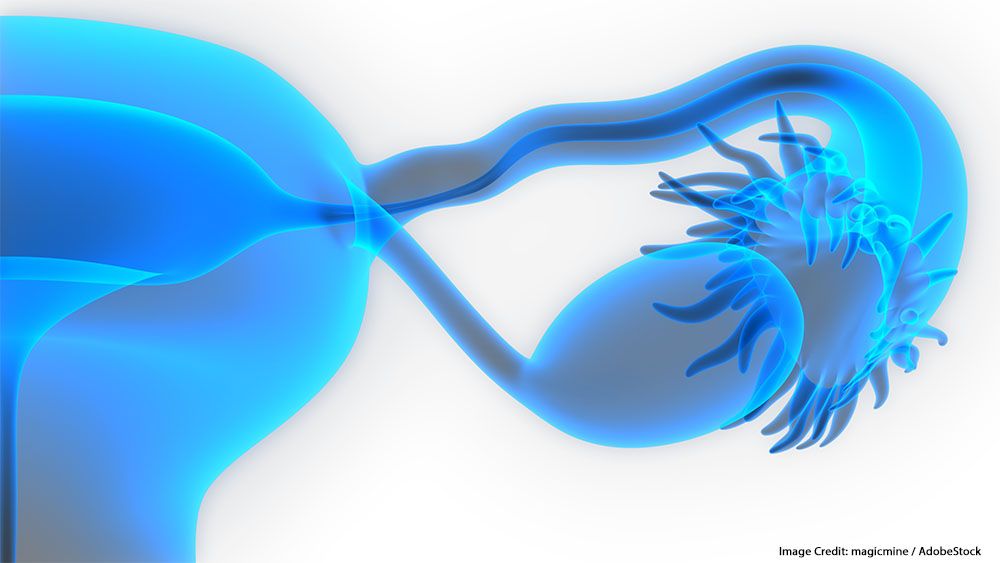Abemaciclib Plus Hormonal Therapy Shows Promising Efficacy in LGSOC/EEC
The adverse effect profile of abemaciclib plus hormonal therapy was comparable with prior reports of CDK4/6 inhibitors.
The adverse effect profile of abemaciclib plus hormonal therapy was comparable with prior reports of CDK4/6 inhibitors.

Abemaciclib (Verzenio) plus hormonal therapy demonstrated clinical activity in patients with recurrent low-grade serous ovarian cancer (LGSOC) and endometrioid endometrial cancer (EEC), according to results from a single institution phase 2 trial (NCT04469764) presented at the 2025 Society of Gynecologic Oncology Annual Meeting on Women’s Cancer (SGO).
Efficacy data from the trial revealed that among patients with LGSOC, EEC, and high-grade serous ovarian cancer (HGSOC), the median progression-free survival (PFS) was 12.0 months (95% CI, 1.9-not reached [NR]), 6.1 months (95% CI, 2.0-12.3), and 1.5 months (95% CI, 0.3-6.0), respectively. Additionally, the 24-week PFS rates in the respective arms were 72.3%, 50.0%, and 12.5% in the respective arms.
Additional results revealed that among patients with LGSOC, there were 0 complete responses (CR), 9.0% of patients experienced a partial response (PR), 72.7% had stable disease (SD), and the clinical benefit rate (CBR) was 82%. In those with EEC, the CR and PR rates were 6.2% and 12.5%, 43.7% of patients had stable disease, and the CBR was 67%. Additionally, among those with HGSOC, there were no CRs or PRs, and the CBR was 38%.
“Abemaciclib [plus] hormonal therapy demonstrated promising clinical activity in patients with recurrent LGSOC and EEC,” Jordyn Silverstein, MD, hematologic oncology fellow at the University of California, Los Angeles, stated with study coauthors. “In HGSOC, despite select patients with CDK4/6 activating features, low clinical activity was observed. Larger studies are needed to validate these findings.”
The nonrandomized, open-label, phase 2 trial enrolled patients with recurrent ovarian cancer or EEC to receive 150 mg of twice daily abemaciclib plus hormonal therapy consisting of either aromatase inhibition or fulvestrant (Faslodex). Treatment continued until disease progression per RECEST criteria, unacceptable toxicity, intercurrent illness, or withdrawal.
The trial initially screened 46 patients, 5 of whom were later excluded due to 2 instances of rapid disease progression and single instances of severe medical condition, ongoing radiation, and inadequate contraception agreement. Of the 41 enrolled, 6 did not have a response assessment, including 2 due to treatment-related adverse effects (TRAEs) and another 4 who began treatment less than 2 months before analysis. A total of 35 patients were included in the response analysis, including 8 who were still on study at the time of data cut-off.
Of the 41 patients enrolled, 49% and 51% had ovarian cancer and EEC, respectively. Additionally, of those with ovarian cancer, 40% had HGSOC, and 60% had LGSOC. The most prevalent ovarian high-grade markers included CDKN2A loss (62%) and CDKN2B loss (25%). Additionally, the most common disease stages at diagnosis were stages III and IV (37% each), followed by stage I (20%), and then stage II (7%).
Patients on trial had a median age of 61.2 (SD, 12.3) at consent, and 80.5% were White and not Hispanic or Latino. The average number of lines of therapy among this group was 3.2 lines (SD, 2.4), with 19.5% of patients having 5 or more lines of therapy. Patients having 1 or 2 prior lines of therapy both accounted for 21.9% of the population, 24.3% had 3 prior lines of therapy, and 12.2% of patients had 4 prior lines of therapy. Additionally, 17% of patients had prior hormonal therapy.
The primary end point of the trial was 24-week PFS rate. Secondary end points included CBR, objective response rate (ORR) per RECIST criteria, PFS, and safety. An exploratory end point was relationship between response and CDK4/6 activation features.
The most common AEs included diarrhea (any-grade: 61%, grade 3/4: 2%), anemia (29%, 12%), fatigue (24%, 2%), nausea (22%, 2%), neutropenia (14%, 5%), and thrombocytopenia (12%, 5%).
Reference
Silverstein J, Grande IK, Kivork C, et al. An open-label phase II study of the efficacy and safety of abemaciclib, a CDK4/6 inhibitor, combined with hormonal therapy in selected patients with recurrent ovarian or endometrial cancer. Presented at the 2025 Society of Gynecologic Oncology Annual Meeting on Women’s Cancer (SGO); Seattle, WA, March 14-17, 2025.